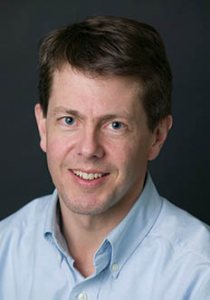Preamble: Just a Moment
Once, feeling feverish before a college philosophy final, I brought a small towel to the blue-book exam. We lefties tend to smudge what we write, and I wanted to keep my writing hand dry, so as not to turn deep thoughts about Plato’s cave into a smeary mess.
Such myopic concerns meant that I probably didn’t care if my exam book communicated my germs, along with ideas, back to my professor. But here at Bates this fall, unusual worries became downright sensible after a spike in student H1N1 cases in October.
A professor posed the virus/blue-book question on the faculty listserv after, perhaps, imagining his students hacking (respiratorily, not intellectually) their way through an exam. How long, he asked, can H1N1 stay alive on blue books?
Answering was epidemiologist Karen Palin, who explained that the virus can live up to 10 hours on surfaces. To be really safe, she offered, he could cure the books overnight in the freezer — extreme temperature disrupts the external membrane of the virus. “I am letting papers sit for about 48 hours,” she wrote. “But that could also be my procrastinating!”
Palin ended her e-mail reply with this epigrammatic kicker: “The things we learn…and teach.”
Another period of impromptu teaching and learning took place at Bates after the September death of President Emeritus Thomas Hedley Reynolds. On page 3, President Hansen shares what she learned about Reynolds’ proudest accomplishment: creating a great faculty.
Reynolds’ memorial was Oct. 24 in the Chapel. Based on the Episcopal Burial Service, it also included military honors: a three-volley rifle salute, taps, and a flag presentation to his widow, Mary. At the service, Carl Benton Straub, dean of the faculty for most of the Reynolds presidency, taught us how to reconcile the two Reynoldses we’d heard so much about.
On the Commencement stage, Reynolds knew that he could create bits of memorable, meaningful magic.
There was the famously introverted Reynolds, the man who, in Straub’s words, would “never hail you from across the campus but would always listen to you in his office.” Then there was the public-minded patrician who, despite his notorious distaste for small talk and glad-handing, loved the Commencement limelight.
Reynolds loved Commencement, Straub explained, for its ritualized authenticity, how each presidential gesture, chosen judiciously, could take on great meaning. “There is neither a wasted word nor gesture” at Commencement, the Rev. Peter Gomes ’65 once noted in a tribute to Reynolds. “It is rich in its austerity, not unlike the president himself.”
On this stage, Reynolds knew that he could create bits of memorable, meaningful magic. The night before Commencement in 1976, for example, he invited jazz pianist Mary Lou Williams to respond to her honorary degree the next day with an impromptu performance — which she happily did.
Other gestures were more poignant. Reynolds always removed his mortarboard when walking past the seniors during the Commencement processional, an act of “academic graciousness,” said Straub.
As Straub spoke to the mourners in the Chapel’s own richly austere setting, he told how Reynolds would also doff his cap as a formal greeting to Straub on Commencement morning. As he recalled the intimacy of that gesture once again, Straub’s voice briefly faltered.



